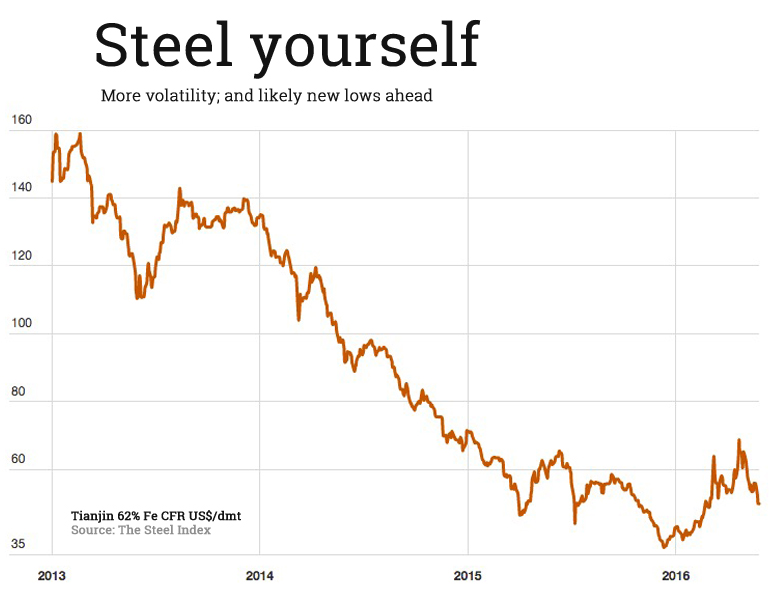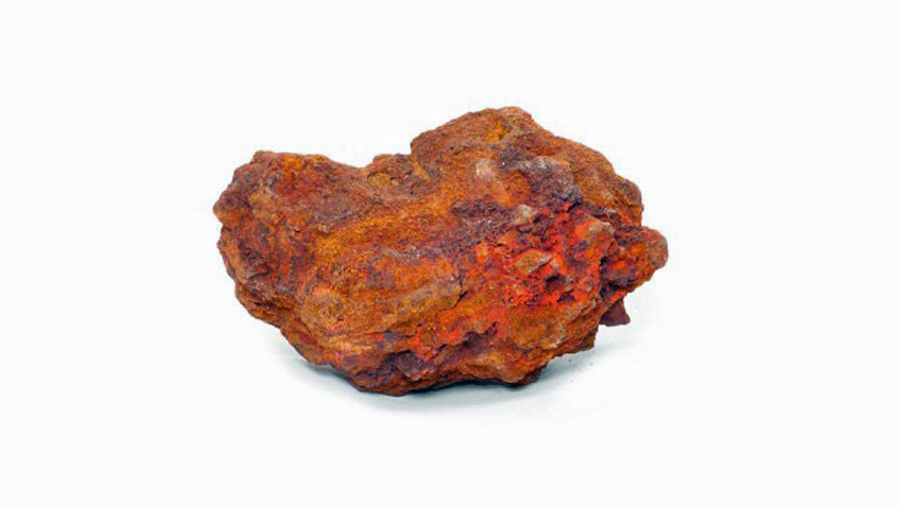The correction is the result of near and longer-term supply and demand dynamics (in short: rising output in Australia and slowing demand in China) and many factors are stacked against a seaborne iron ore price above $50:
- The price spike this year and particularly since March was purely a speculative bubble and not an indicator of improving demand
- Chinese port stocks above 100 million tonnes for the first time since February last year is evidence of opportunistic buying and slack in the market
- As much as 50m tonnes steel capacity came back online this year, but China’s swing steelmakers’ margins are shrinking fast and they could exit the market just as quickly
- Beijing is continuing its program of eliminating chronic overcapacity in heavy industry which goes hand-in-hand with stricter pollution controls
- After three decades of growth China’s own steel industry association said steel output already reached its peak in 2014
- US and other countries’ anti-dumping policies mean Chinese blast furnaces can’t export their way out of trouble
- China’s accumulated steel output will top 10 billion tonnes this year, providing a huge reserve of scrap
- With more than 200m tonnes of capacity closed in three years, the remaining domestic Chinese miners may hang on for longer
- Global output is still growing – an estimated 180 million tonnes of additional supply will enter seaborne trade through 2020
- Additional tonnage is on the left of the cost-curve – cash costs at the Big 3 have been cut by half since 2012 and are heading below $10 a tonne
- Roy Hill is ramping up, Vale’s S11D is on target for end-2016, Rio Tinto’s Silvergrass will take less than a year to build and further out the likes of Simandou, Zanaga and Central Eyre (not to mention a resurgent Iran) could fill any gaps opening up
- Record-low freight rates have shrunk the differential between FOB and landed costs, removing another layer of potential per-tonne-profit
- Some marginal miners encouraged by $50-plus prices restarted production and a chunk of this supply is hedged
- Once the number three exporter, India has lifted export duties for low-grade ore and may soon do the same for 58% Fe and up

Even before the recent drop, the consensus forecast of analysts polled by FocusEconomics was a sub-$50 average during the second quarter. Of the 17 analysts polled the most bearish was JP Morgan at an average of just $38, while even the most optimistic, Oxford Analytics saw the price topping out at $55.
The median forecast for 2017 is even more pessimistic at $44.80 over the course of the year according to FocusEconomics data.


2 Comments
PaoloUSA
There could be a ton of discussions on this analysis, starting with the “cash cost” mambo-jambo, however it appears than the mining industry just never learn. By the way BHP 2015FY cash cost was around 15.6-16.0 $/ton, with an average realized price of 60$/dmt FOB, despite this their EBIT fell by 40%+…………….mysteries of the mining industry……………….
Altaf
Most of the recent gains (3-4 months) in iron ore is caused by commodity exchanges in China which suddenly pumped in huge amounts of cash into the low price ore. There are articles in this site for such trades which say such investments are short term in nature. Once they pull out money in favor of some other commodity, the markets will crash.
Until such time, it is a gift to the marginal miners to be utilized properly.